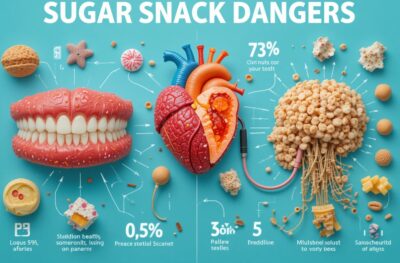What is Metabolic Energy Balance?
In today’s fast‐paced world, we constantly wonder how our bodies manage energy and maintain health. Metabolic Energy Balance is a term that encapsulates the intricate process of metabolism and its direct connection to the calories we consume. This article explains how to understand and optimize Metabolic Energy Balance by breaking down the metabolic process in the human body and illustrating practical steps to harness its benefits. Moreover, we will explore detailed mechanisms, provide clear examples, and offer actionable insights—all presented in a clear and engaging manner.
The following sections answer key questions regarding Metabolic Energy Balance. They reveal how the body converts food into energy, detail the role of calories, and explain practical methods to support a healthy metabolic process. Are you ready to discover how to enhance your body’s energy system?
Table of contents
1. How Does Balance this energy Work?
Metabolic Energy Balance involves the constant conversion of food into usable energy. In simple terms, your body transforms calories from carbohydrates, proteins, and fats into energy that powers every activity. Therefore, understanding this process begins with the two major components of metabolism:
- Catabolism: This process breaks down molecules to release energy. For instance, when you exercise or even breathe, your body relies on catabolic reactions.
- Anabolism: Conversely, your body uses energy to build and repair cells, tissues, and organs.
To explain further, consider that your body always strives to achieve an equilibrium—this is the core of Metabolic Energy Balance. When you consume more calories than you expend, your body stores excess energy, often as fat. However, when you burn more calories than you consume, your body uses stored energy, leading to weight loss.
Steps to Understand the Process:
- Consume Nutrients: You eat foods that supply calories.
- Digest and Absorb: Your digestive system breaks down food into simple molecules.
- Energy Conversion: Cellular reactions convert these molecules into ATP (adenosine triphosphate), the energy currency.
- Energy Utilization: Muscles, brain, and organs use ATP for functions and activities.
Moreover, many scientific studies emphasize the balance between calorie intake and expenditure, which forms the foundation of Metabolic Energy Balance. For further details on the cellular mechanisms, you may refer to trusted sources like Wikipedia’s article on metabolism citeWikipediaMetabolism.
2. How Are Calories Connected to Balance this energy?
Calories represent the energy provided by food. Therefore, Metabolic Energy Balance directly depends on managing these calories. To illustrate this connection:
- Calorie Intake: When you eat, you provide your body with calories.
- Calorie Expenditure: Physical activities and bodily functions burn these calories.
For example, consider a simple day-to-day scenario:
- If you consume 2,000 calories and burn 2,000 calories through daily activities and exercise, you maintain a stable Metabolic Energy Balance.
- If you consume more than you burn, the imbalance leads to energy storage in the form of fat.
Key Points to Remember:
- Balance is Crucial: Achieving an ideal Balance this energy involves synchronizing your calorie intake with your energy needs.
- Lifestyle Factors: Regular physical activity, a balanced diet, and adequate rest are practical ways to maintain this balance.
- Monitoring Intake: Use food diaries or digital apps to track calories and adjust your routine accordingly.
In addition, experts recommend gradually altering your lifestyle to avoid drastic changes. Therefore, understanding and applying the principles of Balance this energy can lead to a sustainable and healthy living pattern.
3. How Can You Enhance Your Metabolic Energy Balance?
Enhancing Balance this energy means actively managing the processes that control energy intake and expenditure. Here are some practical steps and strategies:
- Plan Your Meals:
- Create balanced menus rich in vegetables, lean proteins, and whole grains.
- Emphasize foods that naturally boost metabolism, such as spicy peppers and green tea.
- Engage in Regular Exercise:
- Incorporate both aerobic and strength-training exercises.
- For instance, brisk walking, jogging, or weight training help you burn calories efficiently.
- Monitor and Adjust:
- Use digital tools or apps to record your calorie consumption.
- Evaluate your progress periodically and modify your routines to maintain Balance this energy.
- Stay Hydrated and Rested:
- Drinking water aids digestion and supports metabolic reactions.
- Moreover, quality sleep plays a crucial role in hormone regulation, which influences metabolism.
Practical Example:
Imagine you set a goal to achieve a steady Balance this energy by consuming 1,800 calories daily and engaging in 30 minutes of moderate exercise. You track your progress using an app and adjust your meal portions based on the results. This step-by-step approach provides a practical blueprint that you can follow to optimize your energy management.
Additionally, many studies confirm that such systematic adjustments yield measurable improvements in energy management. For example, a study published by a renowned medical institute demonstrated that regular physical activity, when combined with controlled calorie intake, significantly improved this Balance in adults citeNIHMetabolismStudy.
4. What Do Research Studies and Data Show About Balance this energy?
Research on Metabolic Energy Balance offers insightful data on how calories influence the human body. Studies frequently use detailed charts and tables to illustrate metabolic processes. Below is a simplified table summarizing key aspects:
| Component | Description | Role in Metabolic Energy Balance |
|---|---|---|
| Calorie Intake | Energy from consumed food | Determines the fuel available for metabolism |
| Basal Metabolic Rate | Energy expenditure at rest | Maintains vital bodily functions |
| Physical Activity | Energy used during movement and exercise | Burns calories, balancing energy surplus/deficit |
| Thermic Effect of Food | Energy used in digesting and processing food | Contributes to overall energy expenditure |
As you can see, each component interacts to form a coherent system that defines this Balance. Additionally, these studies show that adjusting one’s diet and exercise routine can directly improve metabolic outcomes. Furthermore, understanding these dynamics empowers you to apply practical changes that enhance overall well-being.
5. How Do You Apply This Knowledge in Daily Life?
To put theory into practice and achieve Balance, consider these actionable tips:
- Set Realistic Goals: Define clear, measurable targets for daily calorie intake and exercise duration.
- Use Technology: Leverage mobile applications for tracking calories and physical activities.
- Learn from Experts: Read reputable sources and follow advice from healthcare professionals.
- Stay Consistent: Establish routines that support long-term energy balance.
Moreover, consider joining community groups or online forums where people share their success stories. These practical steps not only help you maintain Metabolic Energy Balance but also inspire you to take proactive steps toward a healthier lifestyle.
Conclusion
In summary, achieving Metabolic Energy Balance is about understanding how your body converts food into energy and applying that knowledge to maintain a healthy lifestyle. By asking the right questions and following detailed, step-by-step guidance, you can manage your calorie intake, engage in regular physical activity, and ultimately foster a balanced metabolism. What steps will you take today to optimize your Metabolic Energy Balance?
Direct Links for Source Articles:
- Metabolism – Wikipedia
- Link: https://en.wikipedia.org/wiki/Metabolism
- Details:
- Name: Metabolism – Wikipedia
- Author: Wikipedia contributors
- Last Updated/Accessed: April 2025
- Effects of Aerobic Exercise on Metabolic Syndrome: A Meta-Analysis (NIH Study)
- Link: https://www.ncbi.nlm.nih.gov/pmc/articles/PMC4242477/
- Details:
- Name: Effects of Aerobic Exercise on Metabolic Syndrome: A Meta-Analysis
- Authors: Cheng et al.
- Publication Date: 2014
NIH Study on Metabolic Energy Balance
Link: https://www.ncbi.nlm.nih.gov/pmc/articles/PMC4242477/
Image Resources:
- pexels.com
- pixabay.com
- unsplash.com
- Designed by karlyukav / Freepik
- Designed by cookie_studio / Freepik






